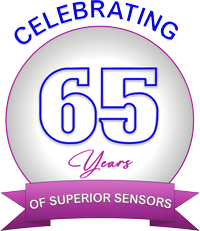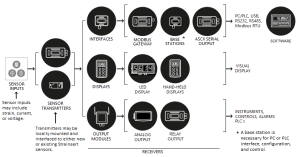Advantages and Applications for Wireless Load Cells
Traditionally, wired load cells, as opposed to wireless load cells, have been used to monitor the strain and load on a specific portion of a system. These wired load cells are integral in managing the function of a system and operating as an alert system when damage has occurred, or maintenance is needed.
Converting wired load cell systems to wireless load cell systems provides more functionality, software integration, and flexibility as the wireless signals can be read from farther away or in locations that are difficult to visit for frequent monitoring. The advantages and applications of wireless load cells provide an accurate and stable system for measuring with high performance devices.
Advantages
Advantages include easy integration and digital analytics, along with a flexible, mobile, system that is easy to customize and maintain.
Current System Integration
Wireless load cell systems can be used in two ways: either as a new wireless system, as it doesn’t require an existing wired system in order to be installed, or as an option to convert an existing wired system into a wireless system. Wireless load cell sensors can be used as a single sensor in a system, or as part of a multi-sensor system, providing flexibility and the opportunity to test the new wireless features before converting the whole established system.
The wireless transmitters that relay the load cell information can be applied to existing sensors, allowing for wireless data to be transmitted without affecting the wiring of the current system. The ability to add wireless sensors to an established system gives the opportunity to integrate the new system without having to completely re-establish the system, making it easy to start using new technology while phasing out the wired elements.
Digital Analytics
An advantage to using wireless load cells over wired load cells is that the wireless sensors integrate with software tools which allows the system to be both quick and convenient to use. This means that sensors can be read from a central workstation as well as with a mobile receiver, giving the system new flexibility and a way to read far-away sensors in almost real-time.
Using software for digital analytics allows the data from the sensors to be recorded digitally for statistics tracking and enhanced insight into the system. The software is easy to configure and calibrate for both data logging and early warning where structures may be weakening, and the load may be too much to handle.
Maintenance
A wireless load cell system is easier to maintain compared to a wired system. With a wireless system everything can be checked from a receiver, so there’s no need to inspect and maintain wiring, relays, and individual wired sensors. Using the wireless data you can read the output and confirm accuracy locally if needed, and maintain sensors as needed without affecting the rest of the system.
Maintenance on the system can be completed on a scheduled basis, but with the software and analytics it’s easier to see any potential issues early on, giving you space to repair the system before a large failure. Sensors can be repaired or replaced as needed and because it’s a wireless system the rest of the system remains up and running.
Applications
Wireless load cells are best applied in situations where wired load cells may be difficult to install. Opting to use wireless systems are also great when installs may be too expensive to use a wired setup, or where wired isn’t ideal or functional in the installation environment.
Beyond the technical aspects of the system, wireless load cells are also a good option if you’re looking to monitor the system from a distance away. Wireless systems can transmit to a receiver through walls, piping, and other physical barriers, compared to the wired systems which rely on wired connections to transmit information. Using the receiver allows the system to be calibrated and tested from one place without having to visit each sensor or station.
Specific types of applications ideal for wireless load cells:
- Aerospace
- Automotive
- Military
- Construction
- Marine
- Mining
- Energy
- Industrial Weighing
- Bridges
- Buildings
Choosing a wireless load cell system, either to adapt a current wired system or to replace the wired system entirely, is the best way for next level functionality. Wireless load cell systems are easy to customize with added accessories such as receivers and sensors, providing the exact system the job requires. Using wireless load cells gives more flexibility, analytics, software integration, and the mobility to check measurements in real time both on the go and from a central monitoring station.
Please contact us to answer any wireless load cell questions or request a quote on our T24 wireless load cell system.


